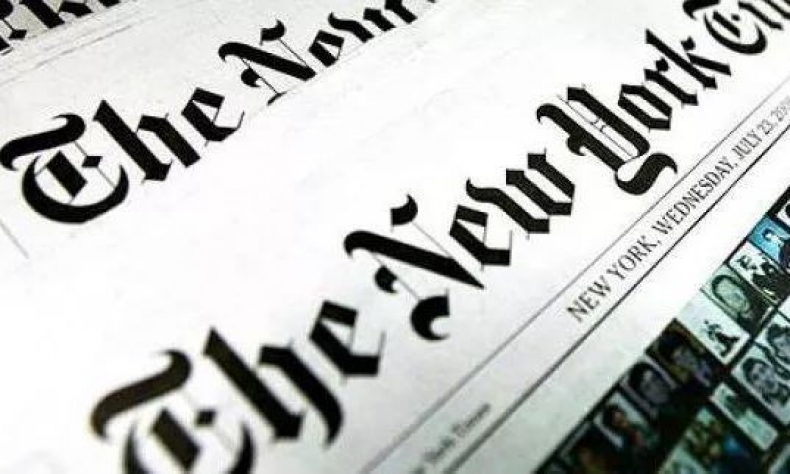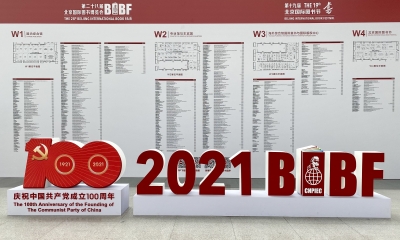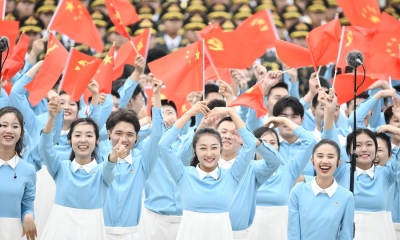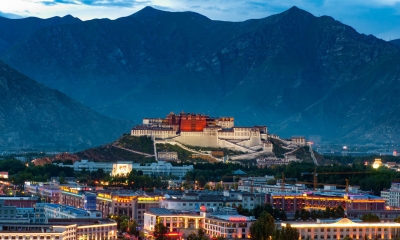The New York Times: Infected with Anti-China Bias?

It is indeed strange that in the eyes of the New York Times, the coronavirus poses a test to only the leadership of the Communist Party of China, and its spread across the country is exclusively the fault of the Chinese system of government. What about the spread across Europe?
Last week, the New York Times was again accused of “double standards” and “anti-China bias.”
At the center of the latest storm were two of the Gray Lady’s articles which report on the measures taken by China and Italy to limit and control the spread of the coronavirus.
The report on China referenced the strict quarantine measures as evidence of the country’s “blunt force” authoritarianism,” and the result of authorities wielding “nearly unchecked power.” China’s methods of containment were labelled as “heavy-handed” and staunchly criticised for having come at “great cost to people’s livelihoods and personal liberties.”
Meanwhile, the report on Italy – whose government employed the very same methods of city-wide quarantine – were framed as necessary and even noble. The report noted that though the country’s economy is bound to be impacted, it was “necessary” to sacrifice the economy in the short term, in order “to protect it from the ravages of the virus in the long term.”
The New York Times – who posted the two articles within just 20 minutes of each other on Twitter in a clumsy self-contradiction – quickly found itself the target of angry netizens who pointed to the glaring double standards. One Twitter user with the handle @keithken remarked, “Wow, change your name to ‘Double Standards Times’ please,” whilst many more Twitter users simply commented, “Double Standard.” An image displaying the two New York Times Twitter posts quickly surfaced and was widely shared on social media. The caption, written in English and Chinese read, “New York Times ‘Double Standards’ Known Far and Wide.”
The inconsistent reporting also drew the ire of fellow journalists and the academic community. British journalist and ex-Fleet Street editor, Damian Wilson, chastised the New York Times over its journalistically dishonest “West [is] good. China [is] bad” narrative. “Lemme get this right,” he said. “Restrictive clampdown in Italy? Necessary. Restrictive clampdown in China? A cure worse than the disease.”
Shen Yi, a professor of international relations at Fudan University, said that such double standards reflect a tendency of the New York Times to allow ideological motivations to influence their reporting. “It is hypocritical and arrogant for the newspaper to prefer highlighting the positive points in the reports of countries who have a similar ideology to them [whilst] criticising those who don’t,” he said.
Ideological bias
When China was grappling with the early stages of the coronavirus outbreak, the New York Times appeared to enjoy speculating over the impacts the epidemic would have on the Chinese President. “The outbreak presents Mr. Xi, with one of the most serious public health crises of his tenure,” wrote China correspondent, Javier Hernandez. “It will be a significant test in his leadership,” he added.
In contrast, Italy, Spain, France, Germany, the United Kingdom, and much of Western Europe for that matter, have found themselves besieged by the coronavirus in recent weeks. Yet, there does not appear to be the same level of interest from the New York Times in questioning the leadership capabilities of Sergio Mattarella, Pedro Sanchez, Emmanual Macron, Angela Merkel, or Boris Johnson.
Some have accused the New York Times of politicising the coronavirus outbreak. The Global Times stated that the New York Times has used the coronavirus outbreak as a means to “attack China’s political system.”
One such article titled “Coronavirus Crisis Shows China’s Governance Failure” does in fact lay the blame on China’s political system for the scope and scale of the coronavirus outbreak. Author Li yuan, says “the failures [which] span the system” may be the reason that Chinese people are “paying the price.” Comparatively, there is not a single article by the New York Times which claims the coronavirus crisis shows the failure of any Western country’s governance.
It is indeed strange that in the eyes of the New York Times, the coronavirus poses a test to only the leadership of the Communist Party of China, and its spread across the country is exclusively the fault of the Chinese system of government. What about the spread across Europe? If the coronavirus spread across China is the fault of the Chinese government, why is the spread across Europe not the fault of the Italian, French, German, or Spanish government?
The specter of Chinese “propaganda”
Additionally, almost all information originating from the Chinese government and media is viewed by the New York Times as inherently suspect. The term “propaganda” is frequently invoked.
Back in February, as the number of new daily cases of coronavirus was steadily falling in China, the country began to incrementally ease its protection measures. The World Health Organization and others commended China for its success in stemming the spread of the outbreak and the country’s media organisations also joined in the nationwide celebration. Articles heaped praise on the government for the vast measures taken and on individual healthcare workers from across the country who left their families to join in the country’s war against coronavirus. The New York Times quickly condemned the media joining in the country’s celebration as evidence of the China’s vast “propaganda machine.” For reference, see “China Spins Coronavirus Crisis, Hailing Itself as a Global Leader” and “Coronavirus Weakens China’s Powerful Propaganda Machine.”
The associating of China with “propaganda” appears to have a long history at the New York Times. “China Masters Political Propaganda for the Instagram Age,” and “China’s Propaganda Machine Takes Aim at US Over Trade War” are just two articles published by the newspaper in 2019. Whilst, “Propaganda With a Millennial Twist Pops Up In China” was published in 2016, and “The New face of Chinese Propaganda,” dates back to 2013.
William Jones, Chief of Executive Intelligence Review at the Washington Bureau, hit back at the New York Times over its ‘all-Chinese-news-is-propaganda’ culture. “Most Chinese journalists are truly journalists eager to ferret out the truth in their reporting. Jones added that Chinese journalists often “give a more objective picture of the situation facing China and the world than you will find in the New York Times,” he added.
Based on the multiple inconsistencies evident in reports on similar events in China and Europe, and the blanket dismissal of Chinese news as propaganda, the New York Times certainly shows the signs of employing double standards along ideological lines. The very fact has led us to think: Is the New York Times a tool of propaganda for attacking China only? Is the basic principle of journalism –objectivity and fairness not applicable to the New York Times?
That said, I would caution readers against ascribing the specter of an anti-China bias to an individual news organisation. Professor Noam Chomsky and economist Edward Herman, in their groundbreaking book The Propaganda Model, ascribe the ideological bias found in the West to the wider political economy of the media environment itself.
 Facebook
Facebook
 Twitter
Twitter
 Linkedin
Linkedin
 Google +
Google +







